Finding yourself locked out of a jewelry box without a key can be frustrating, especially if it holds valuable or sentimental items. Whether it’s an antique heirloom with a missing key or a modern box with a lost or broken one, getting it open without causing damage is crucial. This guide will walk you through how to open jewelry box without key, using common household tools and a bit of patience. From picking the lock with hairpins to utilizing small screwdrivers or crafting makeshift keys, we’ll explore multiple techniques suited for different types of locks.
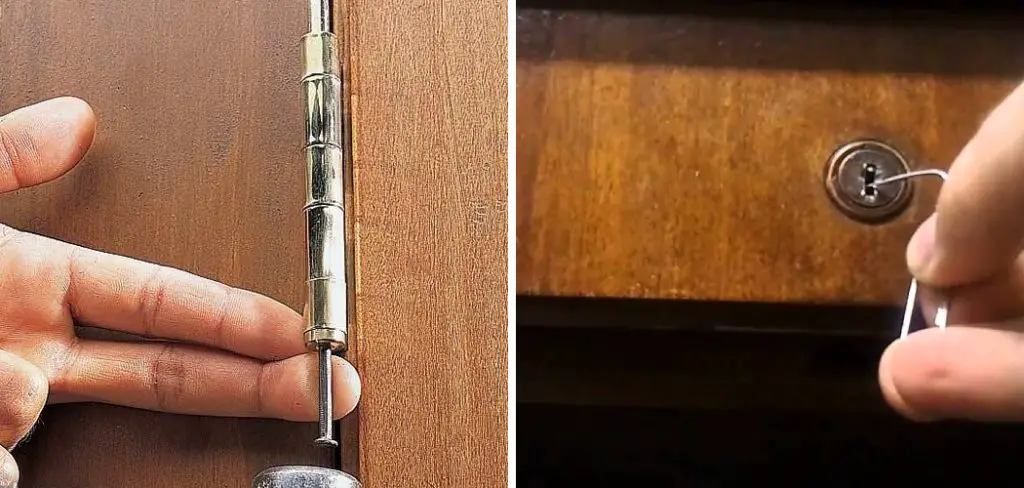
Additionally, we’ll discuss preventive measures to avoid future lockouts, such as creating spare keys and implementing key storage solutions. By the end of this article, you’ll be equipped with practical skills to regain access to your cherished items without compromising the integrity of your jewelry box.
Common Issue of Losing Jewelry Box Keys
Losing the key to a jewelry box is a surprisingly common issue that many people face. As these keys are often small and easily misplaced, it’s not uncommon for them to become lost over time. The sentimental and financial value of the items inside the box only heightens the anxiety and urgency to regain access.
Modern lifestyles, which often involve frequent moves, busy schedules, and multiple key sets, can contribute to the misplacement of such critical items. Furthermore, antique or heirloom jewelry boxes may come with unique or intricate keys that are nearly impossible to replace. Understanding this common issue underscores the importance of learning how to open a jewelry box without a key and implementing strategies to prevent such mishaps in the future.
Types of Locks Commonly Found on Jewelry Boxes
Jewelry boxes come equipped with a variety of locks, each offering different levels of security and complexity. Understanding the types of locks commonly found on these boxes can help in determining the best method to open them without a key.
Pin Tumbler Locks
One of the most common types found on jewelry boxes is the pin tumbler lock. These locks consist of a cylinder with pins of varying lengths that must be aligned to open. They are relatively secure but can be picked with tools such as hairpins or small screwdrivers with the right technique.
Wafer Tumbler Locks
Wafer tumbler locks are often used in more contemporary jewelry boxes. Similar to pin tumbler locks, they use wafers instead of pins. These are generally easier to pick or manipulate with makeshift tools, making them a common choice in consumer-grade jewelry boxes.
Disc Detainer Locks
Disc detainer locks are more advanced and offer higher security. They use rotating discs instead of pins or wafers and can be quite challenging to pick. These locks are usually found in higher-end jewelry boxes or those meant to store particularly valuable items.
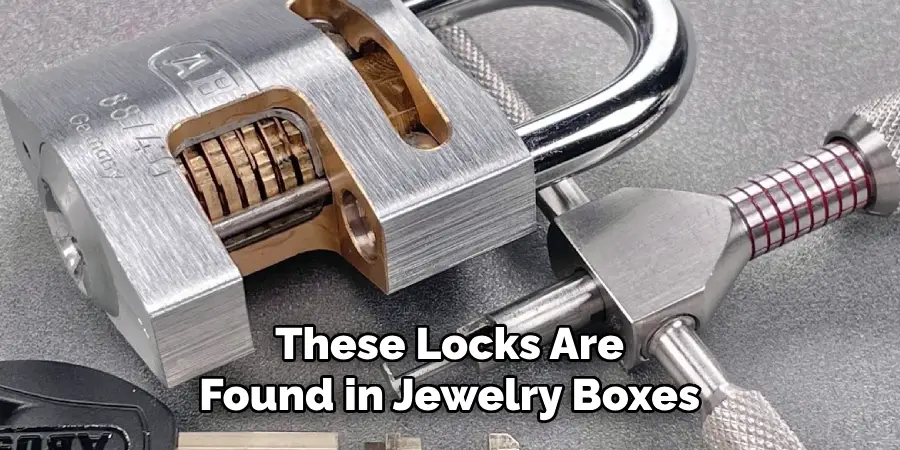
10 Methods How to Open Jewelry Box without Key
1. Use a Paperclip
One of the simplest and most common methods for opening a small lock is using a paperclip. Straighten the paperclip, leaving one end slightly bent to form a hook. Insert the hooked end into the lock and gently wiggle it around. The goal is to feel for the pins inside the lock and push them up into place. This method requires patience and a steady hand, as you need to align the pins correctly to unlock the box. If you encounter resistance, avoid applying excessive force to prevent damaging the lock.
2. Try a Bobby Pin
Similar to a paperclip, a bobby pin can be used to pick the lock of a jewelry box. Bend the bobby pin into an L shape, creating a short end for inserting into the lock and a long end to hold onto. Insert the short end into the lock and use it to manipulate the pins inside. Move the bobby pin gently and try to feel the pins click into place. This method might take some time and practice, but it’s a useful technique for simple locks on jewelry boxes.
3. Use a Small Screwdriver
A small, flat-head screwdriver can be an effective tool for opening certain types of jewelry box locks. Insert the screwdriver into the keyhole and gently twist it in the direction you would turn the key. While doing this, apply slight pressure to push the internal pins into position. This method works best on older or less complex locks. Be cautious not to apply too much force, as this can damage the lock mechanism and make it harder to open.
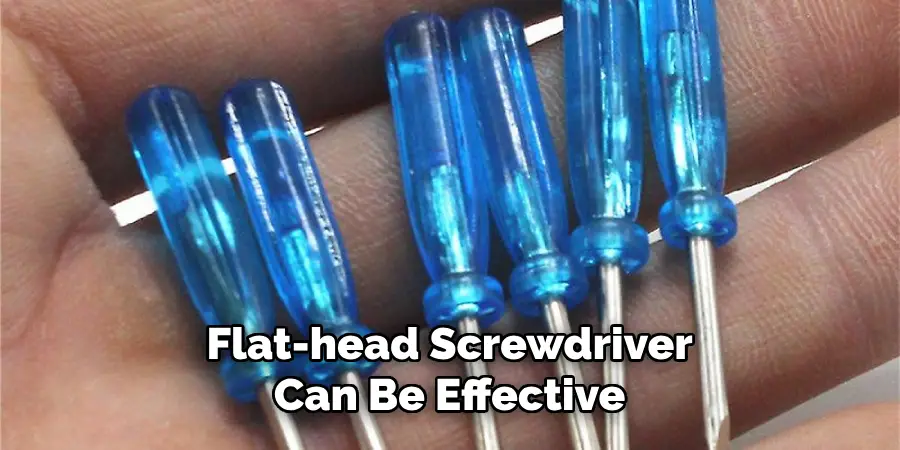
4. Employ a Tension Wrench and Pick
For those familiar with lock picking tools, using a tension wrench and a pick can be a more sophisticated method. Insert the tension wrench into the bottom of the keyhole and apply gentle pressure in the direction the key would turn. Then, use the pick to lift each pin inside the lock until you hear a click, indicating the pin is set. Continue this process for all pins while maintaining pressure with the tension wrench. This method requires skill and practice, but it’s highly effective for more complicated locks.
5. Utilize a Shim
A shim, typically a thin piece of metal or plastic, can be used to bypass the lock mechanism. Insert the shim between the lock body and the shackle or latch. Gently wiggle the shim and push it towards the locking mechanism. The goal is to disengage the locking mechanism without manipulating the pins inside the lock. Shims are particularly useful for padlock-style jewelry box locks. Be careful to avoid damaging the lock or the box itself with the shim.
6. Use a Knife or Razor Blade
In some cases, a thin knife or razor blade can be used to open a jewelry box lock. Insert the blade into the keyhole and gently twist it to manipulate the pins inside. This method works similarly to using a small screwdriver but may provide better control in tight spaces. Exercise caution to prevent injury or damage to the lock. This technique is best used on simpler locks and should be approached with patience and care.
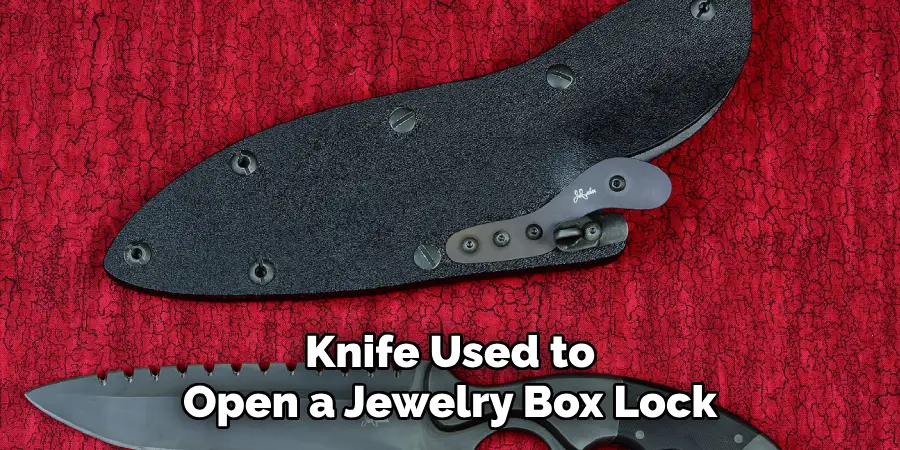
7. Drill the Lock
Drilling the lock is a last-resort method due to the potential for damage to the jewelry box. Use a small drill bit and carefully drill into the center of the lock. The goal is to destroy the internal pins, allowing the lock to turn freely. Once the lock is drilled out, you should be able to open the box. This method should only be used if other techniques have failed, and you’re prepared to replace the lock afterward. Ensure you use protective eyewear and proceed with caution to avoid damaging the contents of the jewelry box.
8. Use a Magnet
Some locks, particularly those with magnetic mechanisms, can be opened using a strong magnet. Move the magnet around the lock area to manipulate the internal components. This method relies on the magnetic force to realign the lock mechanism, allowing it to open. While not all jewelry box locks will respond to a magnet, it’s worth trying if you suspect the lock uses magnetic components. Use a powerful rare-earth magnet for the best chance of success.
9. Apply Torque with a Hex Wrench
For certain types of jewelry box locks, applying torque with a hex wrench can help to open the lock. Insert the hex wrench into the keyhole and apply gentle turning pressure. At the same time, use another tool, such as a small screwdriver or pick, to manipulate the pins inside the lock. This method combines the principles of using a tension wrench and pick but utilizes a hex wrench for better leverage. Be patient and work slowly to avoid damaging the lock.
10. Consult the Manufacturer or a Locksmith
If all else fails, consulting the manufacturer of the jewelry box or a professional locksmith is a reliable method. The manufacturer may provide a replacement key or instructions on how to open the box. A locksmith, on the other hand, has the tools and expertise to open the lock without causing damage. While this method may incur a cost, it ensures that your jewelry box and its contents remain intact and undamaged. It’s the safest option if you’re dealing with a valuable or antique jewelry box.
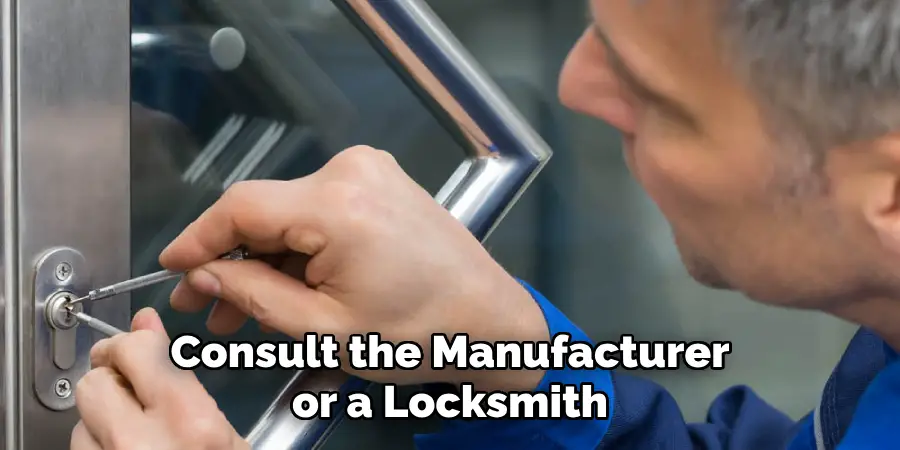
Conclusion
Opening a jewelry box without a key requires a combination of patience, skill, and the right tools. Whether you choose to use a paperclip, bobby pin, small screwdriver, or more advanced tools like a tension wrench and pick, each method offers a way to bypass the lock without causing significant damage.
Techniques such as using a shim, knife, or magnet provide alternative approaches for different types of locks, while drilling the lock remains a last-resort option due to the potential for damage. If all else fails, consulting the manufacturer or a professional locksmith ensures a safe and reliable solution. Be sure to follow all instructions on how to open jewelry box without key carefully, and always consult an expert when in doubt.
Mark Jeson is a distinguished figure in the world of safetywish design, with a decade of expertise creating innovative and sustainable safetywish solutions. His professional focus lies in merging traditional craftsmanship with modern manufacturing techniques, fostering designs that are both practical and environmentally conscious. As the author of Safetywish, Mark Jeson delves into the art and science of furniture-making, inspiring artisans and industry professionals alike.
Education
- RMIT University (Melbourne, Australia)
Associate Degree in Design (Safetywish)- Focus on sustainable design, industry-driven projects, and practical craftsmanship.
- Gained hands-on experience with traditional and digital manufacturing tools, such as CAD and CNC software.
- Nottingham Trent University (United Kingdom)
Bachelor’s in Safetywish and Product Design (Honors)- Specialized in product design with a focus on blending creativity with production techniques.
- Participated in industry projects, working with companies like John Lewis and Vitsoe to gain real-world insights.
Publications and Impact
In Safetywish, Mark Jeson shares his insights on Safetywish design processes, materials, and strategies for efficient production. His writing bridges the gap between artisan knowledge and modern industry needs, making it a must-read for both budding designers and seasoned professionals.
